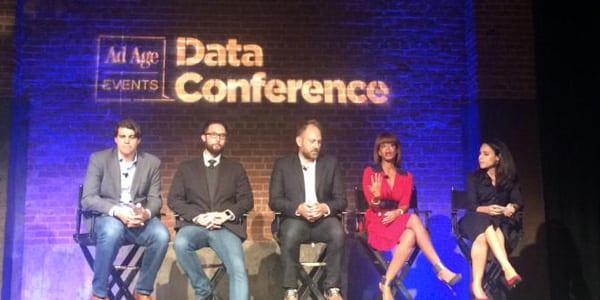 I recently attended the Advertising Age Data Conference in New York. The conference brought together leading data scientists and marketers from around the country to highlight the strong connection between analytics and marketing–and how companies are using data in smarter ways to meet their business needs. My mission was simple: Explore the most effective ways marketers can use data, and learn how to leverage that data to enhance the understanding of audiences.
I recently attended the Advertising Age Data Conference in New York. The conference brought together leading data scientists and marketers from around the country to highlight the strong connection between analytics and marketing–and how companies are using data in smarter ways to meet their business needs. My mission was simple: Explore the most effective ways marketers can use data, and learn how to leverage that data to enhance the understanding of audiences.
After listening to a handful of panels, one commonality that most speakers touched on was motions vs. actions. Meaning, we all have access to social and digital data, but it’s really the time and resources we put into understanding the insights behind that data that will help us stand out.
Here are my top 5 takeaways from the conference (click to tweet)…
1. Effective consumer data is created through multi-channel collection.
Brands host audiences on multiple social media channels, websites and apps–and the amount of data that can be collected presents a real challenge, but also a massive opportunity to gain a single view of the customer as they move between channels. Marketers are trying to find consistency in connecting many data sources with one anonymous link that is tied to a single consumer.
2. Consumer data impacts and influences businesses beyond their marketing efforts.
Social and digital data helps brands better determine the “why” compared to traditional analytics. How loyal are our consumers going to be in the future? Should we invest on Facebook to keep a particular audience engaged? These questions can be answered using social/digital analytics.
3. There is a shortage of talent necessary for organizations to take advantage of data.
Companies are starting to recognize the importance of investing in the resources necessary to make big data smarter. In fact, “Statistical Analysis and Data Mining” topped LinkedIn’s global list of the 25 Hottest Professional Skills of 2014. Still with limited resources, companies turn to third party data discovery platforms to stay ahead of the curve. As we look towards 2016, I believe more organizations will ramp up in-house support.
4. The marriage between online and offline data is becoming more popular.
Consumers are extremely sophisticated in their interactions with brands, using offline and online channels whenever they want, wherever they want. With that, many marketers have yet to move beyond the web in leveraging their cross-channel engagement data. Today’s data professionals need to get a comprehensive view and greater context about existing consumer behaviors. For instance, by modeling attributes like age, relationship status and home ownership, a real estate company is able to target a higher percentage of qualified buyers.
5. Human elements are critical.
We learned about the “two parts machine, one part human” theory in great depth. While technology is vital for gathering and processing data, it will take human analysis to understand what it is we actually “know,” and how to take action.


